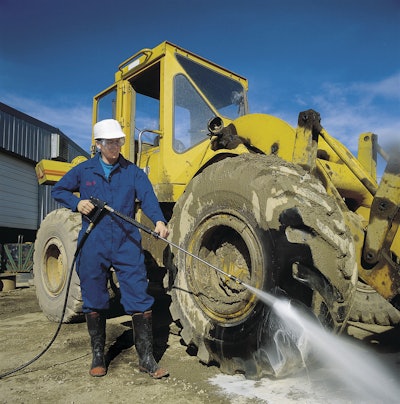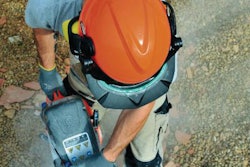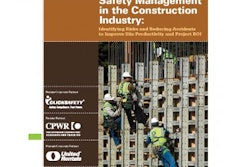
Why is dirt removal so important to construction, mining and oil/gas professionals? Dirt, grime and grease are some of the toughest opponents to a successful heavy-duty equipment maintenance program. This is because dirt can add over a thousand pounds of weight to an earthmover or clog an air-cooled shovel to the point of collapse. It can foul a diesel tractor engine into failure and bring tracked vehicles to a grinding halt. It can slow down hydraulic cylinders, corrode wiring and destroy components. Dirt can also make engines run at excessive temperatures, increasing both fuel consumption and the possibility of cracked blocks.
Economics tell us that dirt, grime and grease can cripple equipment performance and dramatically increase operating costs. Economics also dictate that a regularly scheduled machinery cleaning program should be established to spot potential problem areas before they become serious. Machinery must be clean before painting and should be clean before repairs or routine servicing.
Some mechanics report that they spend up to 20% of their time cleaning parts at their work bench or cleaning machinery so that parts can be either removed or replaced. That’s one hour out of every five spent cleaning. These are just some of the reasons a routine machinery cleaning practice should be included in the PM program.
Basic cleaning program
The cleaning program outlined below provides basic guidelines that can, over the long term, save on repair costs, reduce labor time and save on fuel costs.
Daily, on-site, preventive cleaning: Utilizing a high-volume, medium-pressure, portable cold-water washer for a few minutes of cleaning will greatly extend machinery life. It will rinse clogged radiators and oil coolers, free crawler tracks and clear air intakes. All of this can be performed on the jobsite. A portable wash pad can be easily placed under the equipment to catch any water run-off, which can then be picked up with industrial shop vacs. On-site cleaning can catch leaks and cracks before problems escalate to major repairs.
On-site inspection of vehicles and machinery: Daily cleaning of vehicles, as part of preventive maintenance outlined in the above step, will catch major problems. It is also recommended, however, that a thorough inspection be done in the field after each 600-hour operational cycle. A few minutes cleaning with a trailer-mounted hot-water pressure washer ensures that grease, oil and dirt are removed for proper inspection. In-field inspectors can spot a metal fissure, cracked block or hydraulic leak. Trailer-mounted, hot-water pressure washers operate in excess of 3,000 PSI and at temperatures up to 200F to ensure complete removal of contaminants found on heavily used machinery. Most units carry their own fresh water supply, use either gas or diesel engines and operate independently for complete portability. They, too, can be matched with a portable wash pad for a complete in-field cleaning system.
In-shop maintenance for complete tear downs: Any successful machinery maintenance program includes in-shop, scheduled repairs and rebuilding of components. Sometimes this includes cleaning prior to painting. If so, a thorough cleaning system is needed for heavy-duty work and should include an efficient wash pad design, stationary pressure washer(s), remote stations for convenient operator use, cabinet parts washers for automatic cleaning of components and specialized floor care products (sweepers, scrubbers and vacs) to keep the shop clean, safe and professional.



















